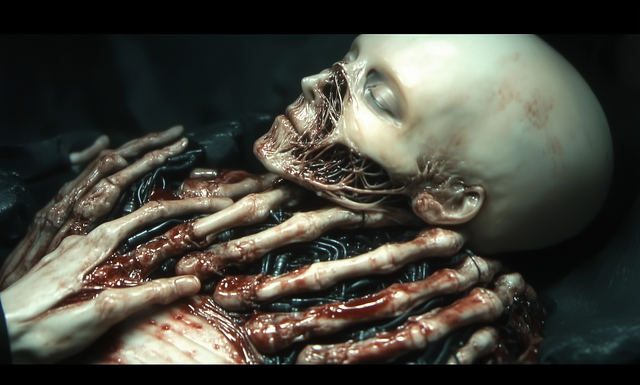HOME | DD
 SuperCellFord — General Dynamics F-111C
SuperCellFord — General Dynamics F-111C

Published: 2021-06-25 13:10:42 +0000 UTC; Views: 7517; Favourites: 72; Downloads: 5
Redirect to original
Description
The General Dynamics F-111C (nicknamed "Pig") is a variant of the F-111 Aardvark medium-range interdictor and tactical strike aircraft, developed by General Dynamics to meet Australian requirements. The design was based on the F-111A model but included longer wings and strengthened undercarriage. The Australian government ordered 24 F-111Cs to equip the Royal Australian Air Force (RAAF) in 1963, but the aircraft were not delivered until 1973 because of long-running technical problems. During 1979 and 1980 four of these aircraft were converted to the RF-111C reconnaissance variant. Four ex–United States Air Force (USAF) F-111As were purchased by Australia and converted to F-111C standard in 1982 to replace F-111Cs destroyed during accidents. Australia also operated 15 F-111Gs between 1993 and 2007, mainly for conversion training. The RAAF retired its remaining F-111Cs in December 2010. In Australian military and aviation circles, the F-111 Aardvark was affectionately known as the "Pig", due to its long snout and terrain-following ability. The F-111Cs gave the RAAF a powerful strike capability but were never used in combat. The aircraft went through modernisation programs in the 1980s and 1990s, and the RAAF acquired improved weapons to maintain their ability to penetrate hostile airspace. Despite this, by the 2000s the F-111Cs were becoming outdated and expensive to maintain, leading to a decision to retire them in 2010 rather than 2020 as originally planned. The F-111s were replaced by 24 Boeing F/A-18F Super Hornets pending delivery of F-35 Lightning IIs in development. In June 1960, the United States Air Force (USAF) issued a requirement for an F-105 Thunderchief replacement. The U.S. Navy began a program to develop a new air defence fighter for use on its large aircraft carriers. On 14 February 1961, newly appointed United States Secretary of Defense Robert McNamara formally directed that the services study the development of a single aircraft that would satisfy both requirements. The Tactical Fighter Experimental (TFX) requirements were based largely on the Air Force's needs. A request for proposals (RFP) for the TFX was provided to industry in October 1961. After four rounds of proposals, General Dynamics (GD) was selected over Boeing; GD signed the TFX contract in December 1962. The USAF F-111A and Navy F-111B variants used the same airframe structural components and TF30-P-1 turbofan engines. They featured side-by-side crew seating in an escape capsule, as required by the Navy. Because of conflict between the Air Force and Navy over whose requirements had precedence, McNamara intervened in 1961, declaring that the Air Force desires would override suggestions by the Navy. The F-111A variant first flew on 21 December 1964 from Carswell AFB, Texas. It was followed by the F-111B, which first flew on 18 May 1965. As F-111 development continued, stall issues arose in certain parts of the flight regime; these were addressed by modifying the engine inlet in 1965–66, ending with the "Triple Plow I" and "Triple Plow II" designs. The F-111B was cancelled by the Navy in 1968 due to weight and performance deficiencies. The improved F-111E, F-111D, F-111F models were subsequently developed for the USAF. The FB-111A strategic bomber and the EF-111 electronic warfare versions were also later developed for the USAF.[14] Production ended in 1976, with a total of 563 F-111s of all variants built, well below the prediction of 1,500. Retirement An F-111C (at left) with one of the RAAF's first two F/A-18Fs. In 2007, Australia decided to retire all of its RAAF F-111s. The drawdown of the RAAF's F-111 fleet began with the retirement of the F-111G models operated by No. 6 Squadron in late 2007.[citation needed] The United States had retired the F-111 (it "was nine percent of Tactical Air Command's fleet but ate up a whopping 25 percent of the maintenance budget", USAF pilot Richard Crandall said) so Australia was the only operator. By 2009 the remaining 18 aircraft reportedly required the most maintenance of any warplane in the world, an average of 180 hours for every flight hour compared to 30 hours for the F-22 Raptor. In March 2008, after a review, the new Labor government confirmed its interim purchase of the 24 F/A-18F Super Hornets until the delivery of the F-35; in 2010, the government signed the acquisition contract. The final RAAF F-111 aircrew conversion took place in 2009, with four pilots and two Air Combat Officers (ACOs) qualifying. The RAAF retired its last F-111s on 3 December 2010, after the final flight by aircraft from No. 6 Squadron over southern Queensland. Australia is currently a partner in the development of the Lockheed Martin F-35 Lightning II stealth fighter, with plans for the country to procure up to 100 examples to replace the F-111 as well as the F/A-18 Hornet. Between 21 and 24 November 2011, 23 of the RAAF's F-111C and F-111Gs which had not been selected for preservation were buried at the Swanbank landfill site outside of Ipswich, Queensland. The RAAF had considered scrapping these aircraft, but concluded that it would be cheaper to bury them. The remaining ex-RAAF F-111s will be placed on displayen.wikipedia.org/wiki/General_…
Related content
Comments: 2

👍: 1 ⏩: 1

👍: 0 ⏩: 0
























